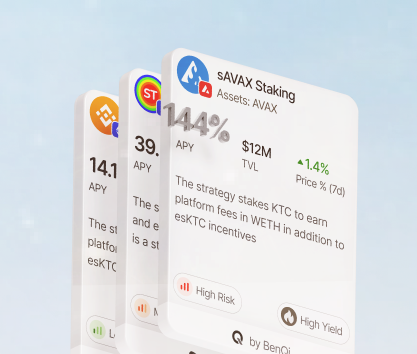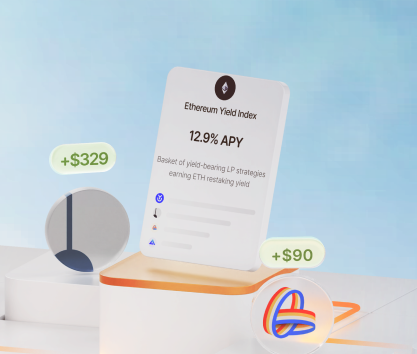Newcomers to the crypto industry often feel lost due to the sheer number of financial instruments available to them. In many cases, starting slow and steady while carefully exploring various investment options is the best strategy. Jumping head-first into liquid staking, yield farming, and other risky strategies can be a reckless move leading to heavy losses.
We are going to explore some of the most reliable investment strategies that beginners will be able to engage in without exposing themselves to excessive risks. However, one should always remember the importance of research (DYOR) and the dangers of the cryptocurrency industry which still suffers from insufficient regulation and lacking legal recourse when things go south.
A reasonable piece of advice to all newcomers is to stay away from memecoins, degen farms, fresh protocols, and other projects that overpromise and underdeliver. Such investment prospects can be exploited by experienced users but usually lead to unsatisfactory results.
Beginner-friendly crypto passive strategies
The DeFi sector is rapidly growing despite some setbacks in 2023. The number of decentralized exchanges is close to 1,400 even without alternative chains, independent decentralized projects, and some protocols that are not tracked by aggregators. Choosing the right approach can be quite challenging even for people with rich experience in finance.
We will cover some of the staple strategies in the DeFi sector. However, newcomers should be aware of some investment methods widely considered reliable and consistent by the crypto community. In some cases, you will be better off using them instead of trying to achieve high returns through various DeFi instruments.
Here are some strategies that you may find interesting:
- Dollar-cost averaging strategy or DCA which is also called Distributed Cost Average is a time-tested approach focused on splitting a large purchase into a series of smaller trades allowing users to reduce the overall price of their holdings and amplify gains from long-term appreciation. This method works well for people who cannot afford to buy a large quantity of assets right away and make smaller purchases periodically. Using automation and targeting reliable coins like BTC and ETH are good techniques.
- Diversification in crypto investing. While many experts may rightfully believe that concentrating positions can be a better approach in the world of blockchain, it is still a good idea to use hedging instruments and diversification to create a balanced portfolio. For example, you can run a delta-neutral setup by short-selling some of the yield farming and staking positions. The diversity of derivatives in the DeFi sector will help you protect long market positions.
- Cryptocurrency arbitrage is the safest yet one of the most capital-intensive strategies. If you have a large chunk of change that you don’t know how to use efficiently in the world of tradfi, it is a good idea to set up several crypto arbitrage bots that will make trades only under ideal market conditions. Price convergence and deal failure should be strongly considered as many tokens are unpredictable and may have liquidity shortages leading to slippages and other issues. Understanding market volatility is also crucial!
These strategies can be used to great success even by newcomers if they invest some time and effort into researching how to effectively use trading bots, employ effective risk management techniques, and identify good target assets. The DeFi sector also has some interesting investment instruments that may work for beginners if they choose reliable protocols to work with.
DeFi lending for novices
Decentralized lending platforms come in all shapes and colors. This particular part of the DeFi ecosystem is one of the most reliable and has been around for ages. Protocols like Aave, Compound, JustLend, and many others offer consistent returns on a variety of tokens. Annual percentage yields may not be as impressive as in many other platforms, but they can reach higher values when utilization goes up.
Here are some interesting solutions for beginners:
- Staking USDT on Aave V3 is a good way to beat inflation and the best tradfi offerings. The pool has a respectable $182 million TVL and pays 4.3% base APY with the 30-day average reaching 7.3% in October 2024. Many newcomers will find it easier to work with stablecoins pegged to the US dollar as they will have a strong point of reference. USDT is also a user-friendly asset that can be used across multiple chains without any issues. Aave is a massive protocol with over $12 billion in total value locked.
- USDC is another hugely popular stablecoin that has overtaken USDT in the DeFi sector. Aave offers up to 4.48% base APY on USDC investments. Utilization has been low in Summer and Fall leading to lower-than-expected returns but they are still higher than, for example, the US Treasury bonds (4.11%). October’s 30-day average on USDC was just 4.65% which is considerably less impressive compared to USDT and DAI returns.
- Investing in the SOL pool on Kamino Lend is a good idea for adventurous newcomers who are interested in exploring one of the most popular blockchain ecosystems. Solana is known for its many memecoins and questionable platforms but the layer-1 coin is still valuable and can be a good target for investors. You can expect to earn up to 4.59% base APY with 30-day averages reaching 4.45% in October.
Cryptocurrency yield farming basics
Yield farming is a method of accumulating rewards from various DeFi protocols by investing stablecoins and layer-1 tokens in exchange for payouts in native, governance, and layer-2 tokens. For example, you can go to JustLend and stake USDD to earn 0.05% APY and up to 5.59% in rewards from the protocol. Tectonic on Cronos offers 0.15% in TONIC tokens on USDC investments while also having a significant 1.87% base APY.
In many senses, yield farming is all about planning your exit correctly by selling rewards before the market collapses due to inflationary pressure and massive selloffs. If you want to compare long-term vs short-term crypto investing options, strategies, like yield farming that do not have any ways to control inflation, appear to be riskier than more conservative approaches. However, it is possible to focus on projects that have good track records and the goodwill of the community.
Here are some of such protocols:
- Convex Finance is a protocol partnered with one of the biggest DEXes in the ecosystem Curve. Convex is a premiere yield farming platform on the Ethereum blockchain boasting a massive $985 million TVL and offering 214 tracked pools averaging at 7.6% APY. You can invest in the MKUSD-USDC pool to earn a 15.1% mixed APY paid in USDC, CRV, and CVX tokens.
- Pendle is another Ethereum-based yield-farming platform with a $2.52 billion TVL and 100 pools averaging 10.23% APY in October 2024. All rewards are paid in PENDLE tokens which are doing just fine in the open market having a solid $774 million market cap and close to $115 million in daily trading volumes. The protocol offers pools with limited maturation periods. You can invest in the SENA pool ($11 million TVL) and receive up to 42% in base APY and 17.66% in rewards on top of that. Pendle allows users to stake a variety of tokens including EUSD, SUSDS, USD0, stETH, lBTC, and many others.
- The Magpie ecosystem is a growing DeFi network offering a wide range of investment opportunities scattered across Ethereum, BSC, Arbitrum, and Optimism. Magpie instruments are among low-risk cryptocurrency investments thanks to the consistent performance of many pools and strong support from the community. The platform has a TVL of over $1.27 billion and features 13 pools averaging 28.43% APY in October 2024. You can expect to receive up to 95% in rewards by investing in the MWOMSV pool or 22.4% by investing in the USDC pool on Wompie.
The yield-farming sector is quite interesting yet struggles with growth due to low adoption rates caused by poor onboarding experience. While community support and resources exist to help newcomers get started, it is still incredibly difficult to learn all the nuances of yield strategies. We strongly recommend avoiding these protocols if you do not know the market and cannot make good predictions about price fluctuations. It takes experience, intuition, and discipline to make money using these platforms.
Beginners are often encouraged to explore safer options to reduce exposure to various risks. We also believe that starting with direct layer 1 staking or stablecoin lending is a good idea if you have the necessary capital to utilize these strategies effectively.
Safe crypto investments for passive income
While the crypto industry may seem impossibly complex, the selection of instruments that are not affected by high risks is very narrow. Yes, the number of tracked pools across the DeFi sector is over 14 thousand but the overwhelming majority of them are either offered by alternative chains or focus on memecoins and other questionable assets.
Here are some safe strategies that you can try:
- Direct layer 1 staking on Ethereum or Cardano is a good idea for investors interested in accruing crypto holdings over long periods without risking too much. Running a node can be expensive as you will need at least 32 ETH to get started ($86,752 in October 2024). However, you can also engage in delegated and pooled staking offered by many centralized exchanges and some protocols. While returns usually hover above 4%, they are surprisingly consistent.
- Stablecoin lending is a great source of consistent profits if you focus on currencies with high rates of utilization. Usually, USDC and USDT are some of the most in-demand assets. Allocating capital to lending protocols is among the easy crypto-staking methods that took the industry by storm in 2018. Aave is a $12 billion TVL protocol that offers 12.41% base APY on USDT investments made on the Arbitrum network. The USDC pool on Spark has an 8.13% base APY or you can invest in the DAI pool with a 5.94% base APY.
- Holding stablecoins in wallets offered by exchanges. It is hugely important for newcomers to focus on learning the technology and understanding how to use various applications that create the DeFi ecosystem. Many crypto wallets for beginners are developed and maintained by exchanges like Coinbase or Binance. These are usually applications that are user-friendly and feature-rich. Many exchanges allow users to receive impressive returns by simply holding stablecoins on their wallets. For example, Coinbase pays up to 4.7% in rewards for USDC holdings on the exchange. Celsius Wallet offers up to 17% off many coins including stables.
Focusing on safer investment options is a good idea due to the variety and prevalence of different market and technological risks in the DeFi sector. Beginners are not equipped with the necessary skills and knowledge to navigate the industry without losing money. Learning blockchain technology basics is quite important. However, it takes a lot of time and dedication to acquire enough information about various protocols, chains, and technological innovations in the sector.
While it may seem that choosing a good destination for capital allocation is too hard, you can simply focus on targeting high-value digital assets that can be used across a variety of platforms. Some coins are great for yield farming while others will be great for staking and liquid staking. However, you can also use coins that are universally demanded by all protocols.
The best staking coins for newcomers
We gathered a list of universal coins that can be used across the whole DeFi sector and provide the necessary versatility to newcomers interested in exploring the world of decentralized finance:
- ETH is the most important token in the DeFi ecosystem as it is the native layer 1 currency of the biggest network driving the growth and adoption of decentralized instruments. Ethereum is home to thousands of different protocols that provide a variety of investment options focused primarily on ETH and its wrapped or stacked versions.
- USDC has recently surpassed USDT as the most popular DeFi stablecoin. You can find USDC pools on most decentralized exchanges, lending platforms, yield farming protocols, and other types of projects. USDC is a great asset to work with regardless of your home blockchain.
- USDT is another stablecoin that can be used across multiple chains including Tron, TON, Ethereum, and many others. While the popularity of Tether has dropped slightly compared to the USD coin, it is still a massive digital asset versatile enough to allow investors to explore a wide range of investment options.









